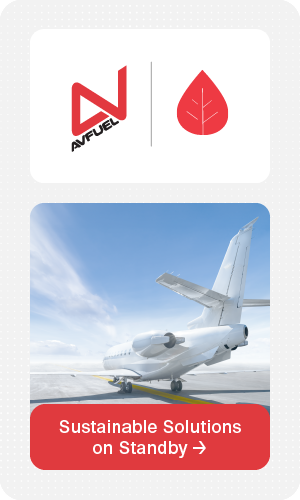NATA Compliance Services’ (NATA CS) new Vice President of Security and Operations reflects on two decades in aviation security and shares insight for those considering a career in aviation.
[ABJ] You started your career serving as a military police officer in the U.S. Marines Corps and used that experience to springboard your entry into aviation security, where you’ve remained for over twenty years. Was this planned?
[JD] It was not a planned career move. My initial interest and intent were in law enforcement, although I always have been fascinated by aviation. When the opportunity to join the aviation community became available, I had to look at a lot of different aspects and ask, “In 20 years, where do I see myself? Do I see myself in a law enforcement career or in an aviation career?” After reflecting, I felt my future was in aviation.
[ABJ] Do you feel your military service prepared you for a career in aviation security?
[JD] Absolutely. The military, especially the Marine Corps, is very regimented. For a military police officer, there are no blurred lines, no gray areas. That very much prepared me for an aviation career in that when you work with a regulated entity, it is just that—a regulated entity.
[ABJ] Obviously, security and challenges go hand in hand. What challenge, that you can speak of, sticks out in your mind?
[JD] It’s not a challenge of a specific situation. It’s a challenge of understanding. In the aviation industry—or any industry, for that matter—one of the most difficult things to learn is how to bridge the gap between security and customer service. Take the identification check on a regulated flight: understanding the regulation, requirements, what you need to do as a security coordinator, and checking that identification against the concerns or drawbacks of that person. You need to be able to communicate to that individual that although they may be on the cover of that magazine that they are holding, you still must verify the identification and abide by the regulations.
[ABJ] What have you learned from that challenge?
[JD] Understanding that communication might need to be adapted, depending on the situation or the individual you are speaking to.
 [ABJ] What would you say is your noteworthy achievement in security?
[ABJ] What would you say is your noteworthy achievement in security?
[JD] Regulatory compliance is difficult – there are so many levels—but I’ve never had a single penalty or non-compliance.
[ABJ] After more than 17 years’ experience in Aircraft Operator Security, you joined NATA CS, where you’ve spent a portion of your time in operations. How is your transition to operations going?
[JD] It’s been exciting. To start off, it’s given me an opportunity to learn another side of aviation security. I started with a good understanding, but it wasn’t good enough. Security can be challenging; operations are dynamic and cover so many areas, and learning the details takes time.
[ABJ] What challenges have you faced?
[JD] Coming from a large Part 135 operator, most of what I focused on was regulatory compliance at a very high level. Now that I’ve transitioned to NATA CS and the operations side, the challenge is understanding the regulations—and that includes more than just security regulations. Our area of expertise also covers anti-drug and alcohol programs, badging, background checks and more. Not just knowing that something needed to occur, but why it needed to occur and then navigating through the compliance road map has been a real area of growth.
[ABJ] How have you overcome those challenges?
[JD] It’s been a mix of going into the federal regulations, studying them, and gaining a better understanding of how they impact security programs. A lot of operators understand the basics of the regulations but not the fine details or how they need to be implemented. I’ve been really lucky that NATA CS has been doing this for quite a while—over 20 years. The knowledge base of the executive leadership and the team itself is astounding. Conversations with other members of the team on how the programs and the regulations behind the programs interact have been highly beneficial and have broadened my knowledge.
 [ABJ] What have you found most rewarding in this transition?
[ABJ] What have you found most rewarding in this transition?
[JD] The most rewarding thing I have seen is the growth within our team. It’s a group of highly dedicated, knowledgeable professionals. Every day, they do something that makes me sit back and say, “Wow.”
[ABJ] How do operations and security work together?
[JD] Closely. If you have ever attended one of our security webinars, you’ve heard us speak about the importance of security in operations. They go together hand-in-hand, especially with the ever-growing risk businesses face from a cybersecurity and insider threat landscape. Your operation consists of your team members, customers, facilities, systems, and data. Security is there to protect the operation.
[ABJ] You have recently been promoted to Vice President of Security and Operations. What do you look forward to in your new role?
[JD] I look forward to continuing to learn more about NATA CS’ administrative functions and continuing to serve this dynamic aviation community. Regulatory compliance is a difficult business and NATA CS’ role is to assist its clients in meeting their compliance needs. It sounds simple, but as I am learning, there is a great deal of complexity in making it all happen.
[ABJ] What do you hope to achieve?
[JD] I believe that teamwork is the backbone of everything we do as an organization and our foundation for continued success. For me, it’s not so much what I hope to achieve, but what I hope we can achieve. I mentioned earlier that NATA CS has over 20 years of experience in regulatory compliance services. Our goal is to look at the next 20 years and ensure we have a solid foundation of growth and continued service to the aviation community. If I can look back in 20 years and see that NATA CS has continued to grow and serve with the highest standards, then we will have done what we set out to do.
[ABJ] Looking back, what has been your takeaway in devoting your career to this industry?
[JD] As with most industries, any career in the aviation industry is going to have its challenges. What I find amazing is the support network in place to help someone overcome those challenges. You get to meet and work with so many interesting people, and although the aviation community is very large, you also find out exactly how close it is and how everyone is working for common goals. I don’t think you can say the same for many other industries. If you know me, I talk a lot about teamwork and service. I do that because 20-plus years in this industry has taught me how important these elements are to success.
[ABJ] What advice would you give to others who are just entering, or thinking of entering, a career in aviation?
[JD] We all want to be successful, but it’s important to define what success looks like to you and keep working to make that happen. There are no easy paths to success, and those that are usually end in failure. It’s not going to be an easy journey, but if you are willing to stay with it, do the right thing, commit to continuing to learn, and—most importantly—enjoy what you do, you can have a highly rewarding and successful career in aviation.






